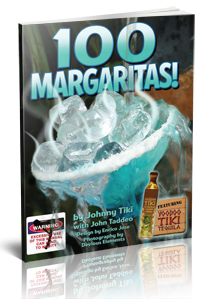Tequila is the fastest growing alcohol type on earth, with silver tequila, oftentimes labeled as platinum tequila rivaling vodka for the top notch spirit position. At the same time, aged tequila like reposado tequila, anejo tequila and extra anejo tequila is always in big demand, and growing each and every day because of a remarkable shortage of superior quality aging barrels. The demand has prices skyrocketing across the board. But, tequila has a disguised history. A long lost distant relative which may be making an important recovery after decades of becoming forgotten and unnoticed. Pulque is tequila’s age old ancestor and it’s back in a big way, though where can an interested tequila fanatic taste pulque in these modern times? And if you were lucky enough to come across it, what is the suitable way to sip it?
Virtually all pulque is ingested in pubs labeled “pulquerías”. At the beginning of the 20th century, there were at least 1,1 thousand of these in Mexico City alone. By the early 20th century, pulquerías grew to be socially accepted, and several were places of vast elegance. Though regardless if for affluent or poor, two features stood out amongst these establishments, bizarre or snappy titles and paintings decorating the walls. Bar names included (translated) “My Office,” “Memories of the Future,” “Drink and Go,” I’m Waiting for You Here at the Corner” and, across the street from the National Chamber of Deputies, “The Recreation Center of Those Across the Street.” Diego Rivera said that just about the most important manifestations of Mexican painting was the drawings that decorated the facades and interiors of pulquerías.
An individual custom reused at all pulquerias at the beginning of the twentieth century was to place sawdust on the floor. Similar to today’s custom of pouring out a bit of liquor onto the flooring for close friends that have perished, the custom back then was to commence a pulque-drinking session by dropping a little bit on the floor. However, the reasoning back then was to offer the spill to Mother Earth, not lost friends.
Ordinary pulquerías seem to be like clubs with sealed membership, with recreational visitors disregarded or occasionally stared at. Common trips and massive consumption of the drink will probably win status. While some facilities may prohibit women, it is much more usual for the establishment to supply a distinct seating area for women. Intermingling of the sexes was not acceptable. In the more non-urban regions of Hidalgo and Tlaxcala, where a large number of pulque is manufactured, the pulque is cleaner and better. A retailer commonly displays a bright white flag over the entrance when a new shipment is here.
Conventionally, pulque is dished up from substantial barrels on ice, and served in glasses, using a “jicara”, which is a half a calabash tree gourd. The bartender is named a “jicarero”.
In a pulquería, the word “cruzado” implies something such as “bottoms up”. Standard glassware for pulque add to the mystique. Glasses have colourful labels and may reveal a consumer’s capacity to ingest pulque. Massive two-liter glasses are classified as “macetas” (flower pots), one-liter glasses are Cañones (cannons), half-liters are Chivitos (little goats), quarter-liter glasses are Catrinas (dandy), and eighth-liter glasses are Tornillos (screws). Commonly, these glasses are made from a greenish, hand blown glass. Pulque can be consumed straight from the barrel or could have a number of additions that include fruit or nuts mixed in. Pulque prepared in this way is termed “curado” or cured.



